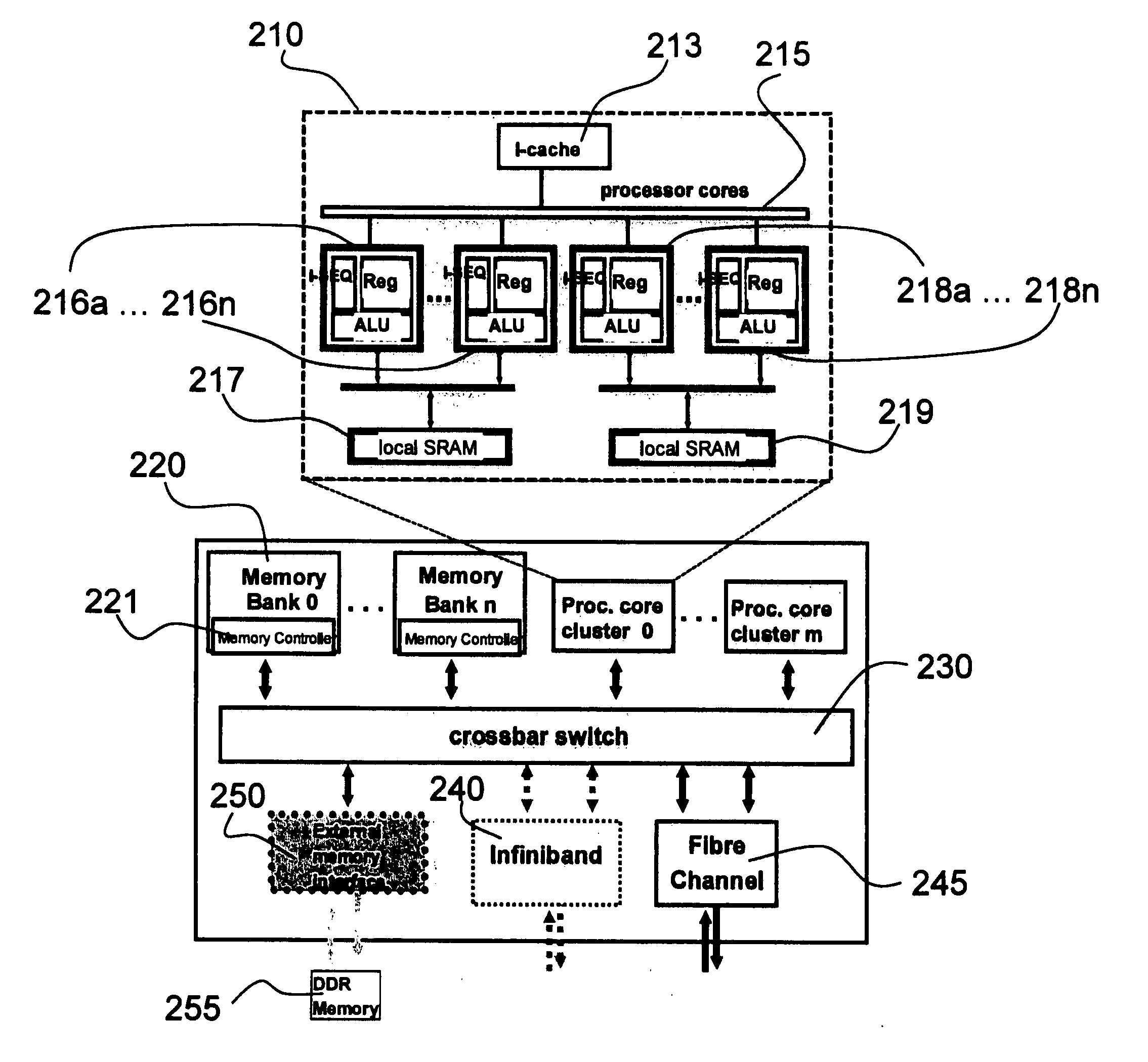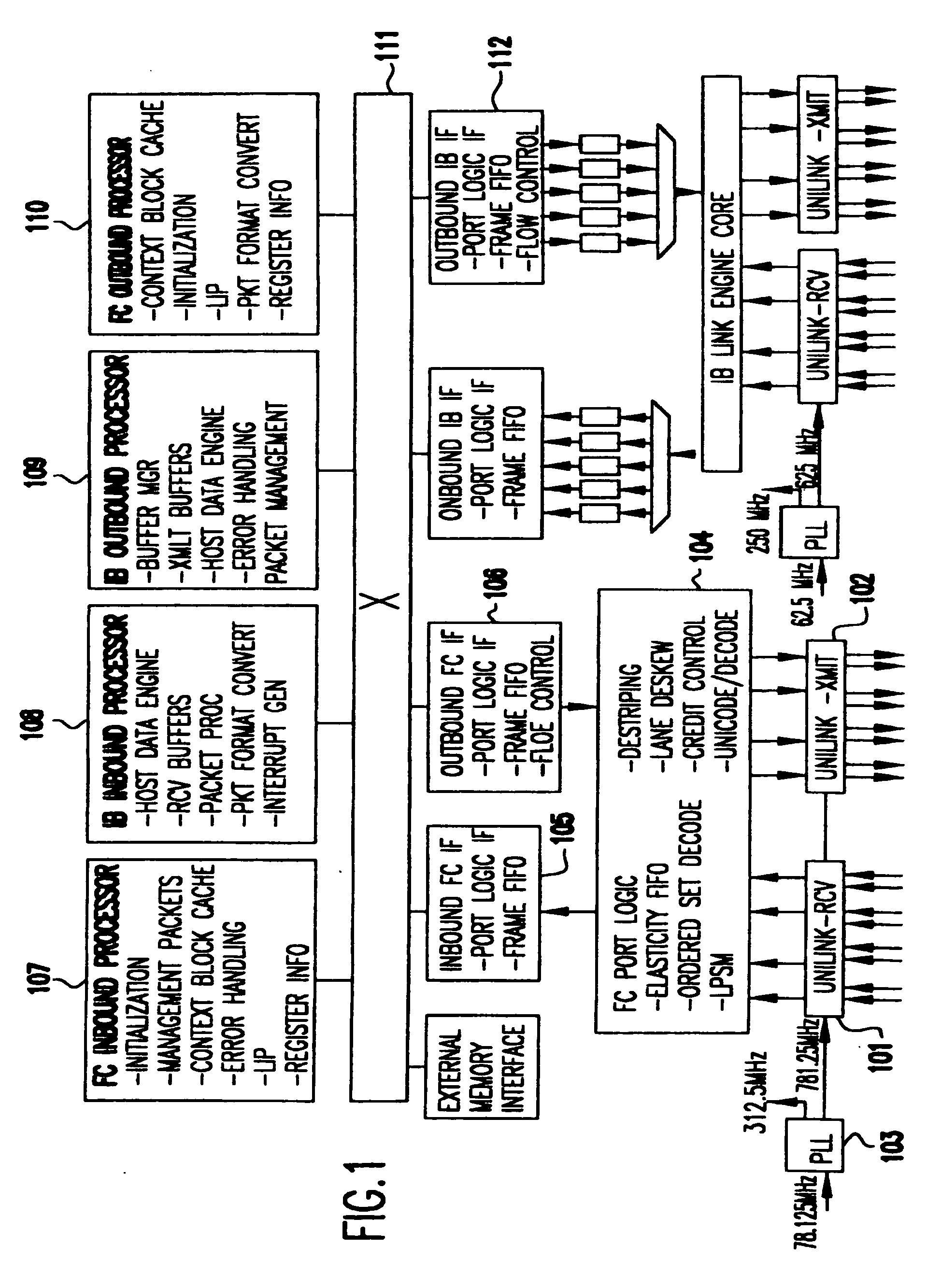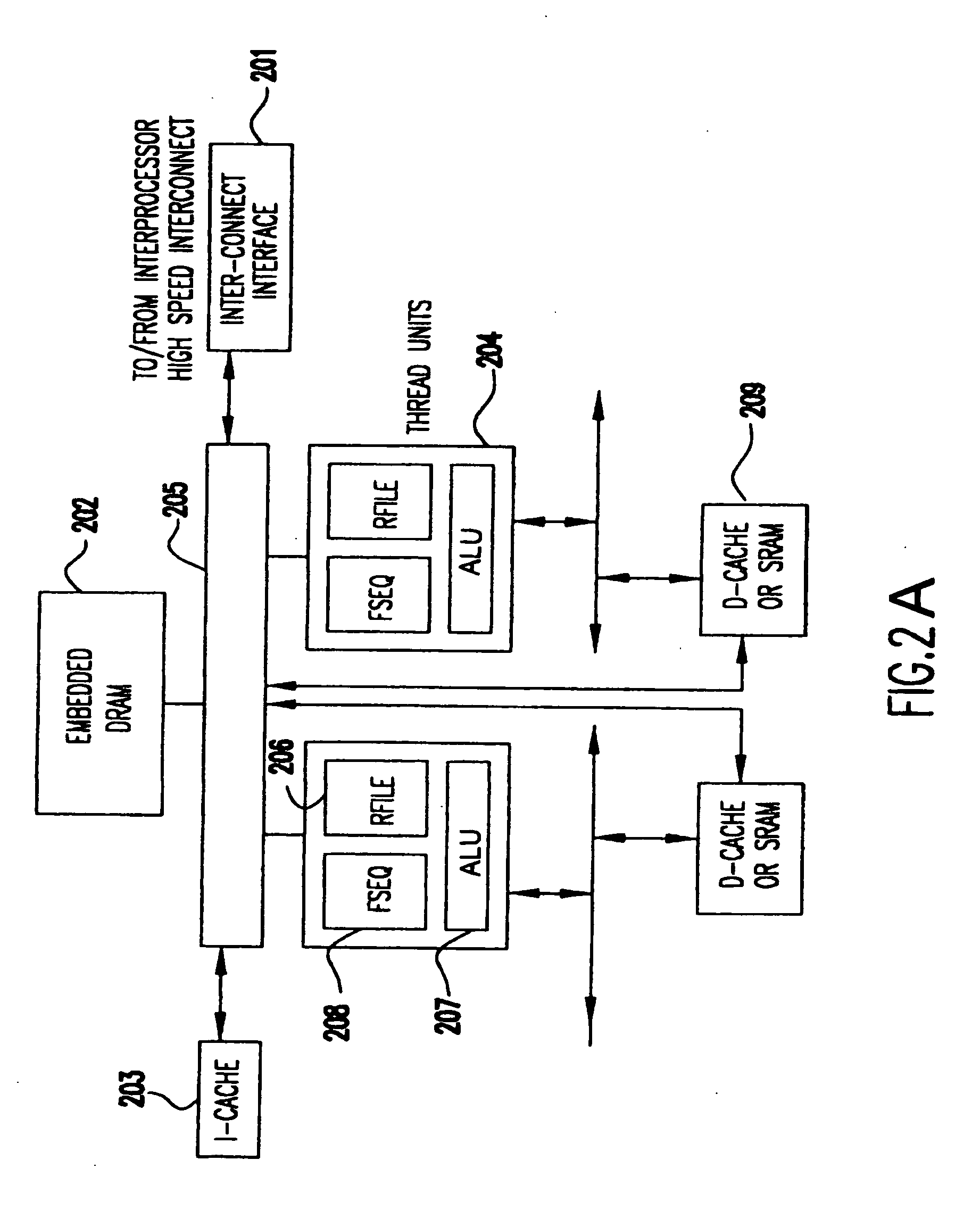Programmable network protocol handler architecture
a network protocol and handler technology, applied in the field of network communication systems, can solve the problems of difficult bundling of multiple processors to work in parallel on a single job, and the single network processor may not have the computing capacity to handle all the requirements, and achieve the effect of high speed performance in the network protocol handler
- Summary
- Abstract
- Description
- Claims
- Application Information
AI Technical Summary
Benefits of technology
Problems solved by technology
Method used
Image
Examples
Embodiment Construction
[0025] Referring now to the drawings, and more particularly to FIG. 1, there is shown the overall programmable architecture according to the invention. This architecture handles network traffic from one network protocol, performs traffic conversion from the first network protocol to a second network or bus protocol, and handles traffic of the second network or bus protocols. In our preferred embodiment, the architecture handles traffic from Fibre Channel (FC) and Infiniband (IB) network architectures. Connection to a network physical communication system is by means of receiver 101 and transmitter 102 supplied by a clock signal from a phase locked loop (PLL) 103. The receiver 101 and transmitter 102 are connected to hard-wired fiber channel (FC) port logic 104 which outputs frame data to an inbound FC interface (IF) 105 and receives frame data from an outbound FC interface (IF) 106.
[0026] As seen in FIG. 1, the preferred embodiment of four processors 107, 108, 109, 110, connected b...
PUM
 Login to View More
Login to View More Abstract
Description
Claims
Application Information
 Login to View More
Login to View More - R&D
- Intellectual Property
- Life Sciences
- Materials
- Tech Scout
- Unparalleled Data Quality
- Higher Quality Content
- 60% Fewer Hallucinations
Browse by: Latest US Patents, China's latest patents, Technical Efficacy Thesaurus, Application Domain, Technology Topic, Popular Technical Reports.
© 2025 PatSnap. All rights reserved.Legal|Privacy policy|Modern Slavery Act Transparency Statement|Sitemap|About US| Contact US: help@patsnap.com



